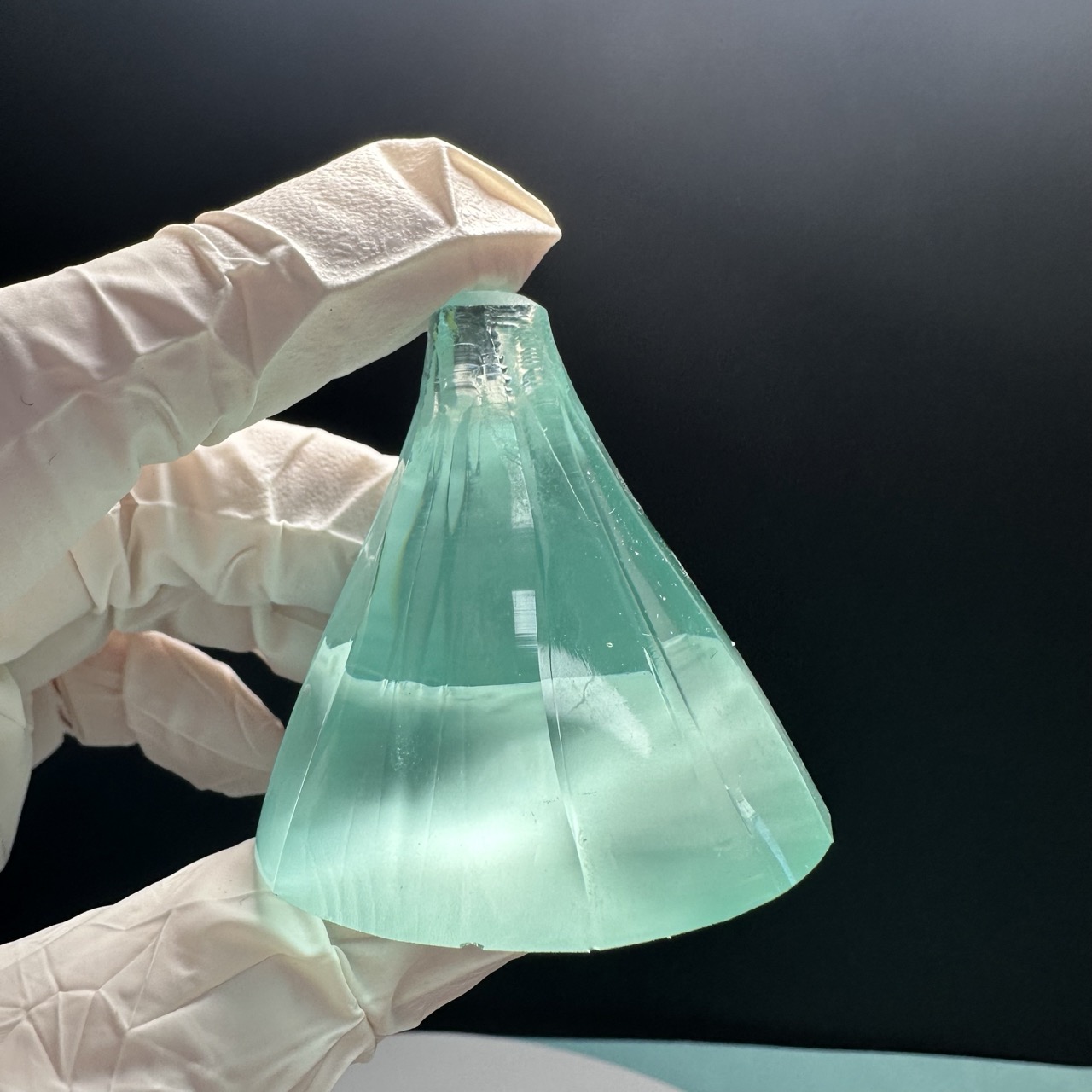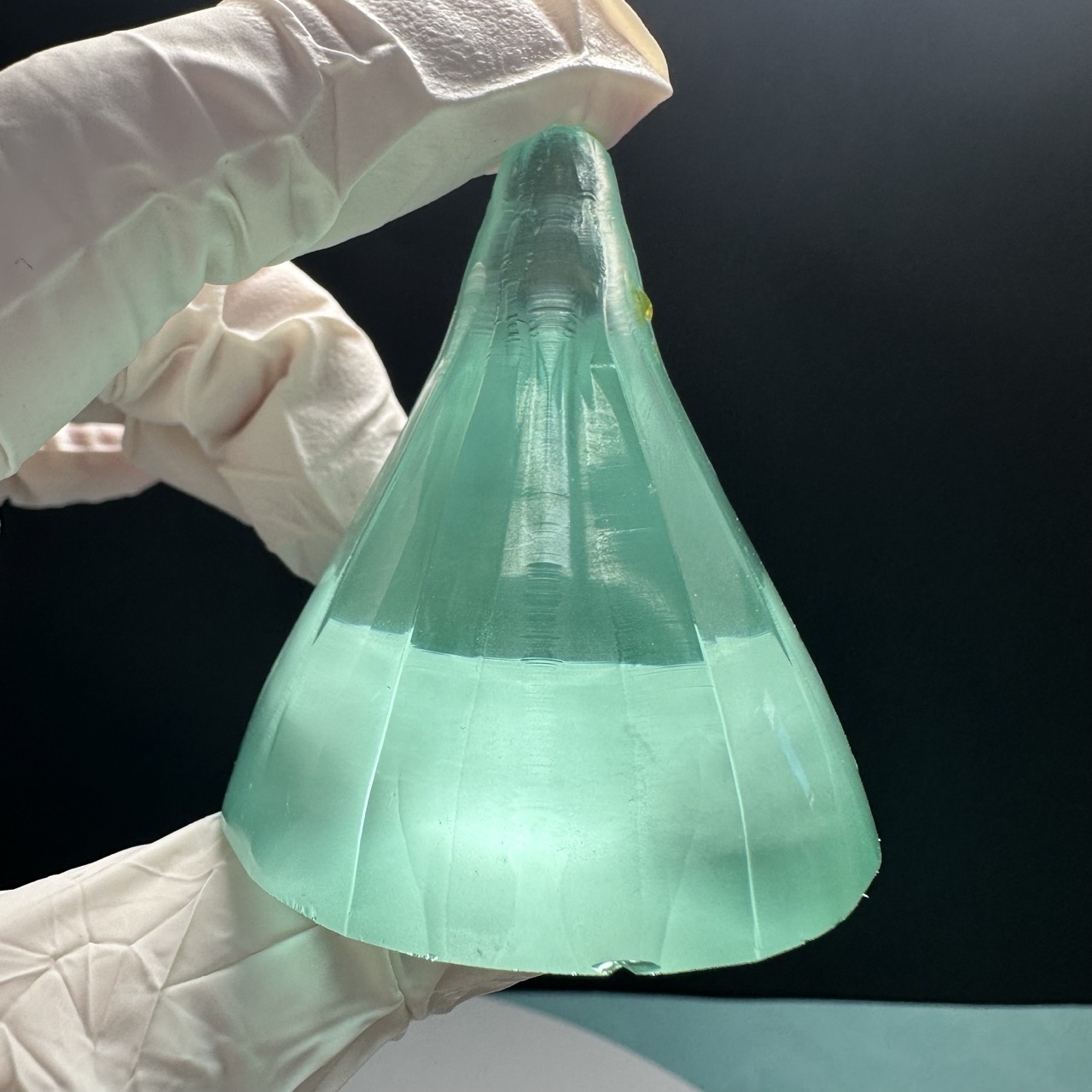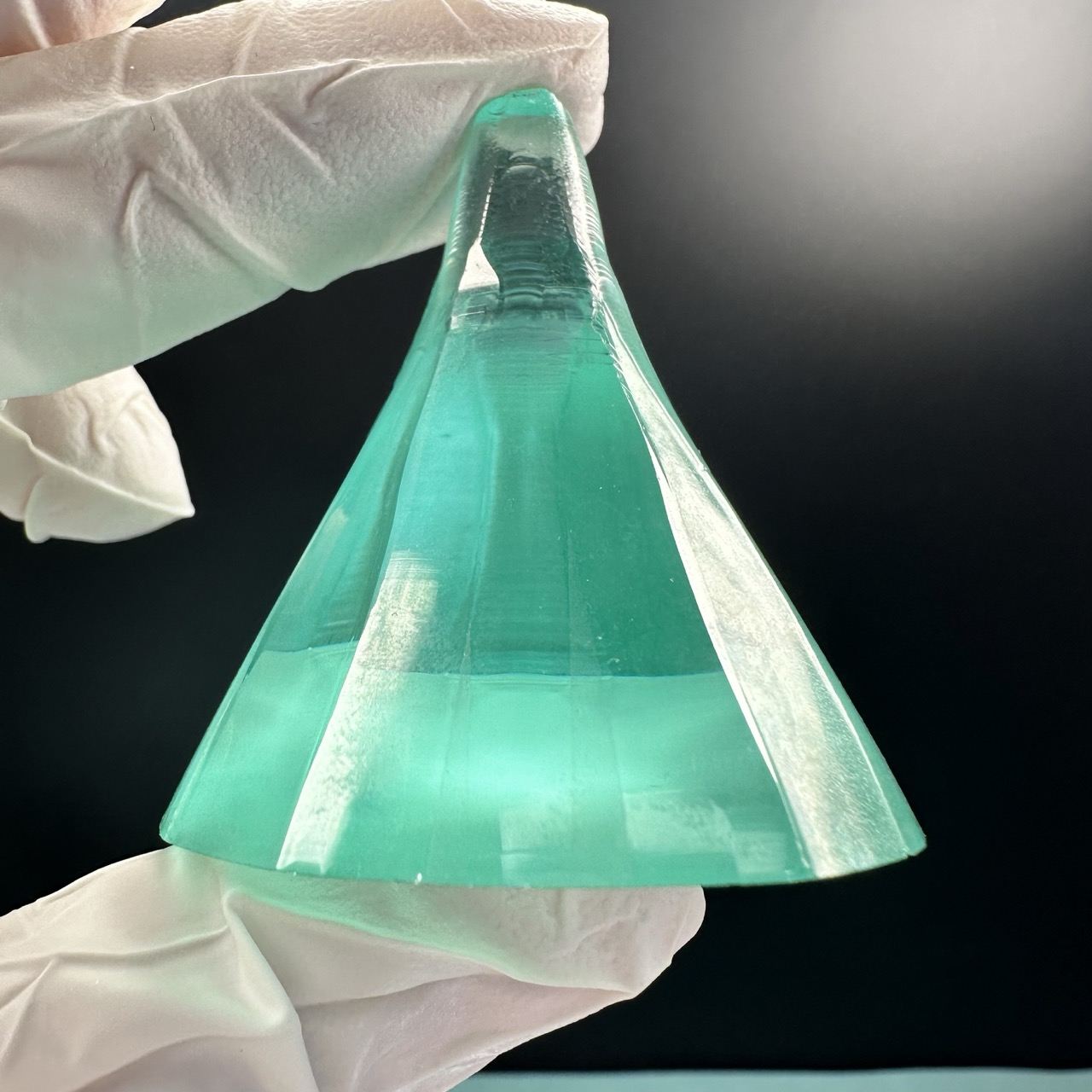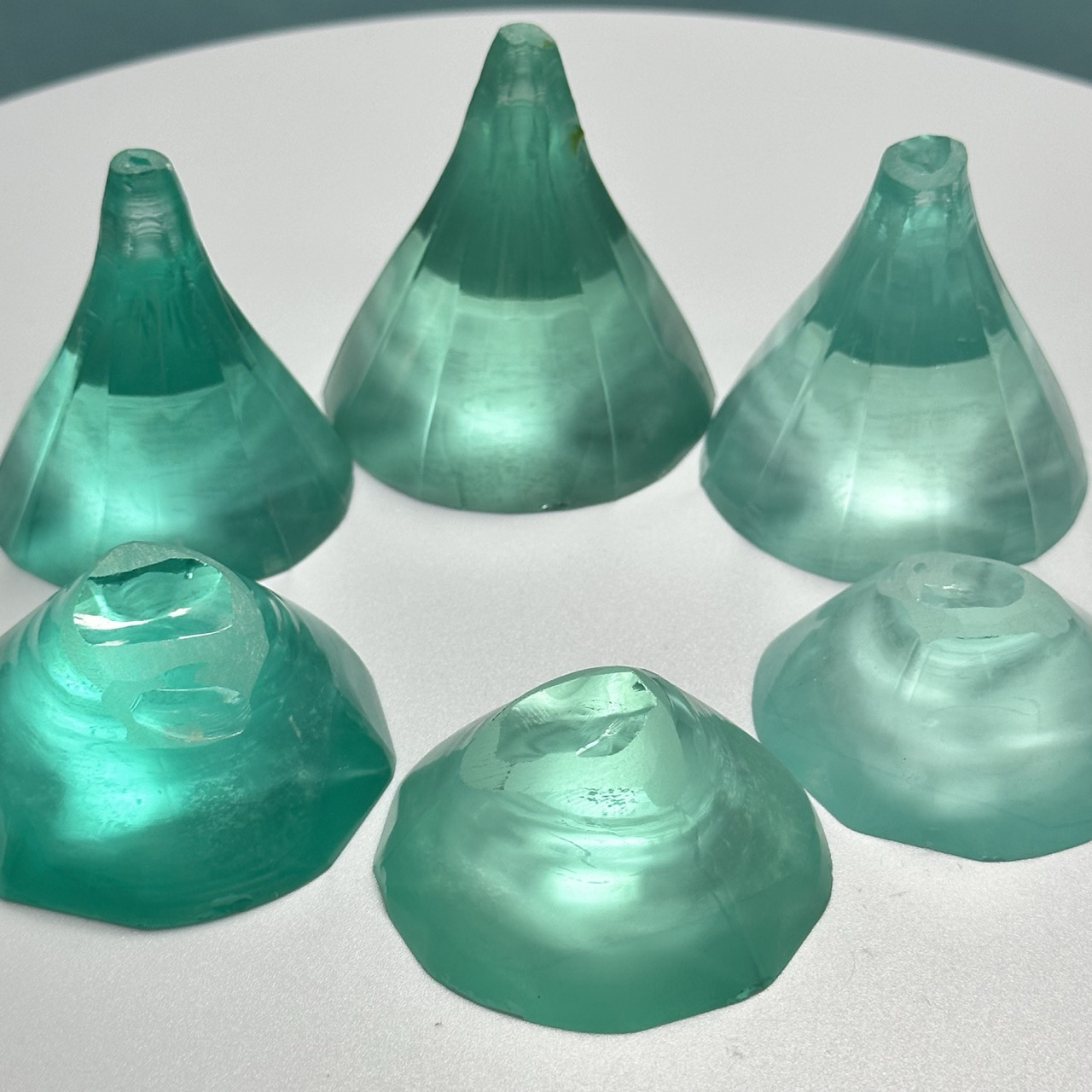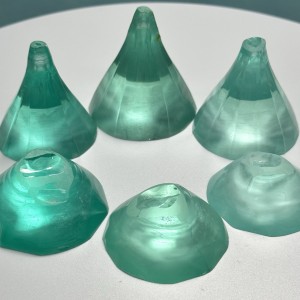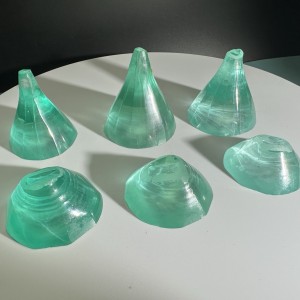Paraiba Blue lab-made raw genstone YAG Material Lake green
Paraiba Blue YAG is a yttrium aluminum garnet (YAG) gemstone doped with erbium to produce a vivid blue color reminiscent of Paraiba tourmaline. This gemstone exhibits unique optical properties, including strong absorption in the visible and near-infrared regions of the spectrum, making it suitable for a variety of applications such as laser technology and optical devices. A summary of the original Paraiba Blue YAG gemstone might focus on its chemical composition, crystal structure, optical properties, and potential uses in different industries.
In addition to their striking Paraiba Blue color, pristine Paraiba Blue YAG gemstones have remarkable physical and chemical properties. They typically exhibit a cubic crystal structure with erbium dopants incorporated into the yttrium aluminum garnet lattice. This doping process affects the optical properties of the gemstone, including its fluorescence and light absorption.
In addition, the rarity and vibrant color of Paraiba Blue YAG gemstones enhance their appeal in the gemstone market. Collectors and enthusiasts value these gemstones for their beauty and rarity, often incorporating them into jewelry designs to showcase their unique color and optical brilliance.
Overall, Paraiba Blue YAG gemstones in their raw form represent a fascinating intersection of gemmology, materials science and optical engineering, offering aesthetic appeal and functional utility in a variety of technical applications.
Detailed Diagram
